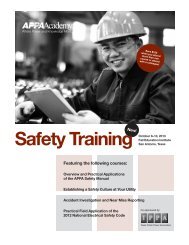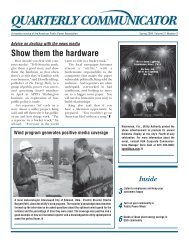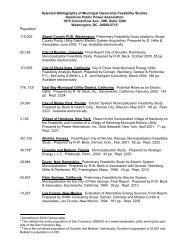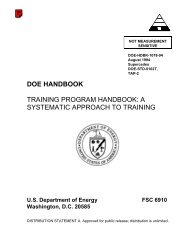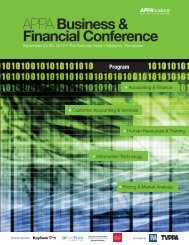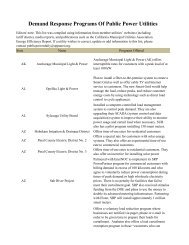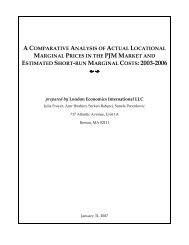Safeguarding Classified and Sensitive But Unclassified Information ...
Safeguarding Classified and Sensitive But Unclassified Information ...
Safeguarding Classified and Sensitive But Unclassified Information ...
Create successful ePaper yourself
Turn your PDF publications into a flip-book with our unique Google optimized e-Paper software.
Secure Telephone Unit III (STU-III) & Secure Terminal Equipment (STE) Security Guidance<br />
There are two types of secure telephone devices that, when appropriately configured, allow for<br />
the telephonic discussion of classified information. The two types of telephones are the older<br />
generation Secure Telephone Unit III (STU-III) <strong>and</strong> the next generation, Secure Telephone<br />
Equipment (STE). The following provides some brief information <strong>and</strong> guidance on the use of<br />
each of them.<br />
The STU-III <strong>and</strong> STE are two-part systems. The STU-III instrument – which is the telephone<br />
itself, is one part <strong>and</strong> the associated Crypto Ignition Key (CIK) is the second part. For the STE,<br />
the instrument (telephone) is the one part <strong>and</strong> its associated Fortezza+ Crypto Card (KOV) is the<br />
second part. The STU-III/STE instruments st<strong>and</strong>ing alone without the associated CIK/KOV<br />
inserted are considered “Controlled Cryptographic Items” (CCI) that require the same level of<br />
protection you would afford a high value item. CCI equipment must be protected in a manner<br />
that provides sufficient protection to preclude theft, sabotage, tampering, <strong>and</strong> unauthorized<br />
access.<br />
However, when the CIK/KOV are inserted into the instruments, then the instrument takes on the<br />
same level of classification for which the CIK/KOV have been programmed <strong>and</strong> therefore require<br />
the same level of protection associated with that level of classification.<br />
The STU-III/STE instrument may be installed <strong>and</strong> used in any room in which classified<br />
conversations are permitted. Once installed – it must not be moved from that location without<br />
prior coordination <strong>and</strong> approval of your Federal COMSEC Custodian. The COMSEC Custodian is<br />
the authorized individual responsible for the receipt, transfer, accountability, safeguarding, <strong>and</strong><br />
destruction of COMSEC material assigned to a particular COMSEC account.<br />
Each STU-III/STE terminal has a two-line display that prompts the user through the various<br />
phases of a call <strong>and</strong> other terminal operations. When a user calls another STU-III/STE terminal,<br />
the terminals communicate with each other during the secure mode setup. Each terminal<br />
automatically displays authentication information of the distant terminal.<br />
Each user is responsible to observe the terminal display before communicating any classified<br />
information, either voice or data. The classification level displayed will be the highest common<br />
level shared by the two terminals for that call. The terminal user should restrict the classification<br />
level of the conversation (or data traffic) to no higher than the displayed level.<br />
The information displayed indicates the approved clearance level for that call, but does not<br />
authenticate the person using the terminal. Therefore, users must use judgment in determining<br />
need-to-know when communicating any classified information.<br />
• STU-III/STE telephones deployed to State, Local, Tribal <strong>and</strong> Private Sector customers are<br />
keyed to <strong>and</strong> authorized for use at the SECRET level.<br />
• Locations where a STU-IIIs <strong>and</strong> STEs are deployed shall have a GSA Approved container<br />
available for the storage of the CIK/KOV. When unattended, the CIK/KOV shall be stored<br />
in the approved container.<br />
• When accountable COMSEC material is to be issued to a user, the authorized COMSEC<br />
Custodian will issue the material on a H<strong>and</strong> Receipt in the form of an SF-153, COMSEC<br />
Material Report. H<strong>and</strong> Receipt users are not authorized to reissue the material <strong>and</strong><br />
must report the intention to move the equipment prior to taking action. Only a<br />
COMSEC Custodian can issue a h<strong>and</strong>-receipt or authorize moving equipment.<br />
21




